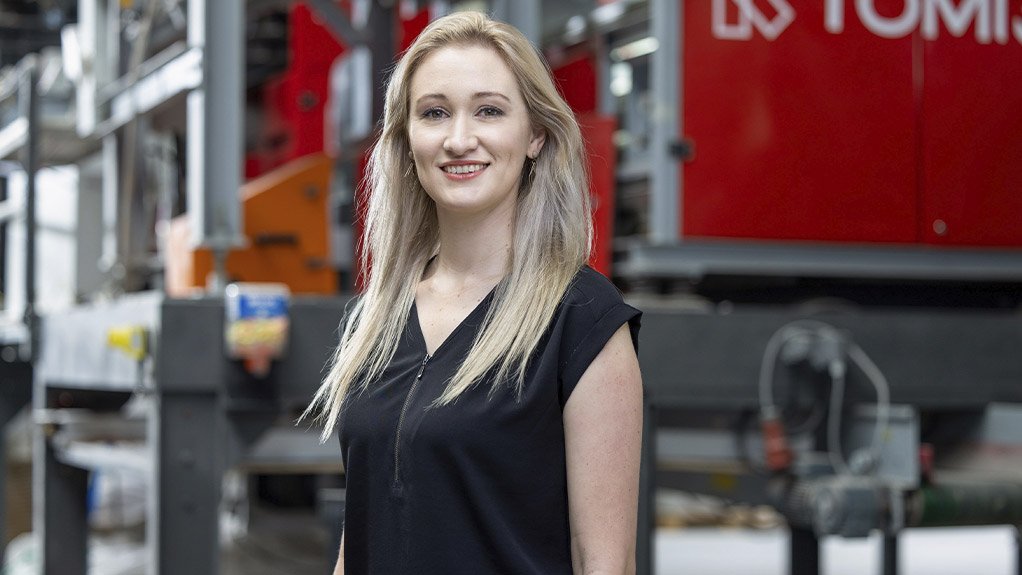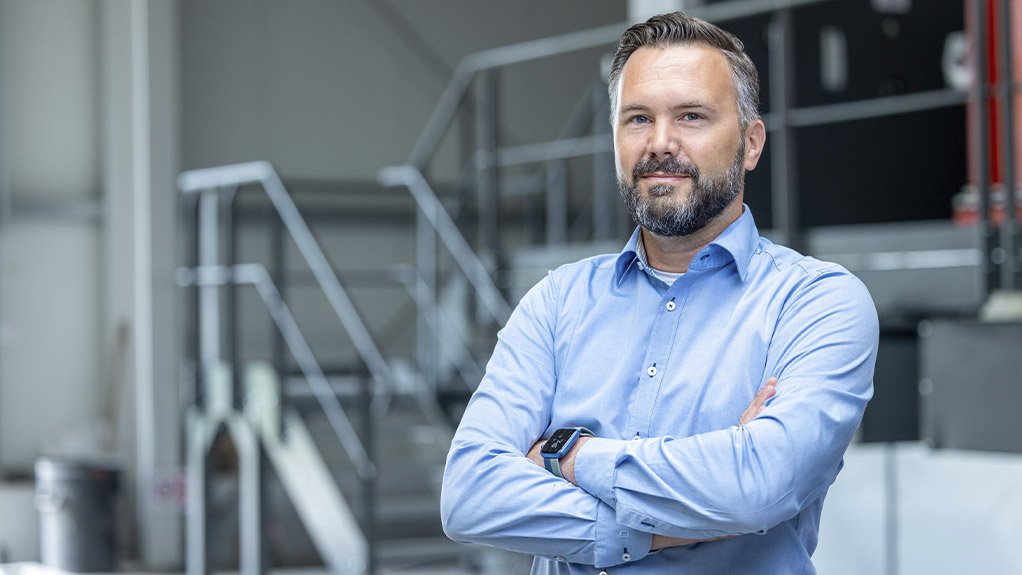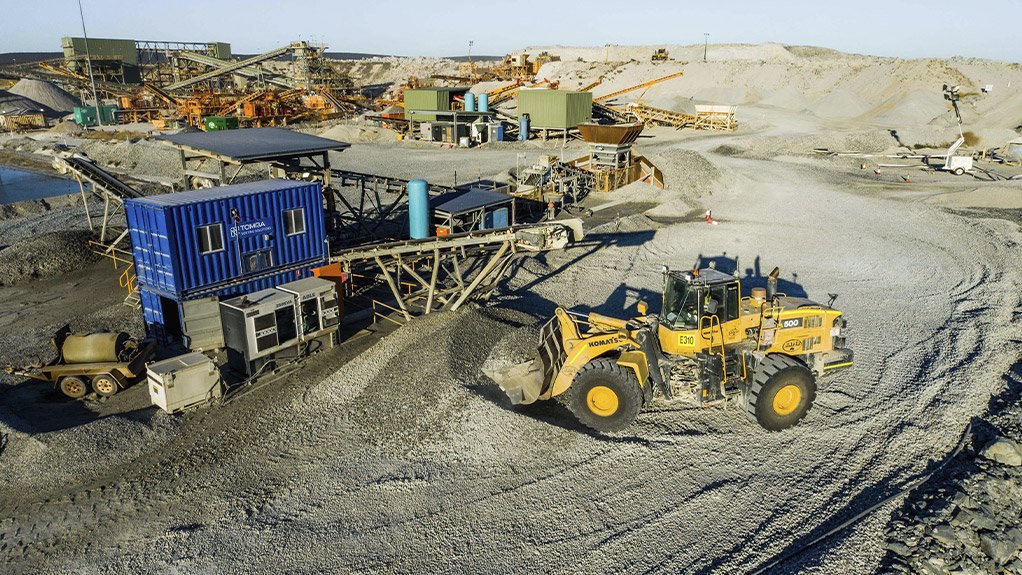Modern society is heavily reliant on metals and minerals and the demand is growing, driven by a combination of global trends, says materials handling solutions provider TOMRA Mining.
“Rising urbanisation and higher living standards are pushing up the requirements of construction materials, as well as the minerals used in the electronics and appliances that are part of daily life. The pursuit of the United Nations’ Sustainable Development Goals (SDGs) and the move away from fossil fuels are also driving a significant increase in the demand for the metals and minerals required by low carbon technologies – from rare-earth elements (REEs) for wind turbines and quartz for solar panels to lithium for electric vehicles (EVs) and copper for renewable-energy systems.”
The company adds that, “even in agriculture” there is an increasing need for minerals such as phosphates for fertilisers which are required to feed the growing population.
TOMRA Mining stresses that the globe is facing an unprecedented demand for metals and minerals, which are finite and scarce resources. Recycling rates for materials critical to the energy transition, such as REEs, lithium and graphite, are low and are not expected to rise significantly. Moreover, recycling alone will be unable to meet the increasing demand, and mining will continue to play the key role in supplying necessary primary resources.
“It is becoming increasingly important to mine efficiently and sustainably using modern technologies such as sensor-based sorting.”
Sustainable Minining, Energy Transition: Lithium
TOMRA Mining notes that in October, the European Parliament and Council provisionally agreed that all new vehicles registered in Europe must be zero emission by 2035, which will accelerate the adoption of EVs.
It cites the European Automobile Manufacturers’ Association which, in 2021, noted that 20% of new cars sold in the European Union were plug-in and, by 2030, the association expected this number to rise to 60%.
It comments that legislative actions similar to provisional agreement are expected worldwide and will drive a fast growth in the demand for EVs, which will require high volumes of lithium.
“The current production rates of lithium will soon be insufficient to meet this demand. In fact, according to the Benchmark Mineral Intelligence, it will require 78 mines by 2035 (the calculation includes projected volumes of recycled lithium) – this is around six times more production than today. [As such], it is essential that mining and processing this element is as sustainable as possible.”
TOMRA Mining suggests that its sensor-based sorting technology can significantly contribute to reducing the environmental footprint of lithium mining and processing in a variety of ways.
“On the one hand, it is able to selectively reject waste and low-grade ore upstream of processing. This means that less material is processed, resulting in significantly lower usage of energy, water and chemicals. A complementary environmental advantage of this technology is reduced wet tailings.
“On the other hand, sensor-based sorting technology addresses the challenge of basalt contamination, which is typical of lithium mines. [Owing] to its high density, this high-iron, barren material is also concentrated by dense-media separation, contaminating the final product. With sensor-based ore sorting technology, it is possible to sort out the basalt and, as a consequence, unlock value from existing stockpiles of contaminated materials, achieving a high-purity product.”
The solutions provider states that this is evidenced by its involvement at Galaxy Resources’ Mt Cattlin mine, in Western Australia, which had been stockpiling basalt contaminated material since 2016, while it searched for an effective solution.
In 2021, it installed a TOMRA PRO Secondary Laser sorter, and in nine to 12 months it processed the best part of the 1.2-million tons of stockpiled material, consistently achieving high purity with less than 4% basalt.
Galaxy Resources’ Matthew Bateman reportedly said: “With the TOMRA sorter, we are using far more contaminated ore than we would previously have processed.”
Sustainable Minining for Agriculture Phosphates
Another “excellent” example of how sensor-based sorting can make a difference is in processing phosphates, by recovering the valuable nutrient efficiently and more sustainably. The sorting plant at Wa’ad Al Shamal in Saudi Arabia, with a capacity of about 1 900 t/h, is the “perfect demonstration of this technology’s potential”.
The Wa’ad Al Shamal’s run-of-mine material contains significant amounts of unwanted flintstone, or chert, which has to be removed before the phosphates are fed downstream for refinement processes.
TOMRA Mining’s x-ray transmission sorters remove flintstones from the phosphate to reduce silicon content, so that the downstream process can be significantly downsized. This results in much lower consumption of energy, water and flotation reagents.
Moreover, its sensor-based sorters are able to process larger grain sizes and can extract value from materials which are often discarded as waste when using traditional sorting solutions.
Collaborting for a Susustainable Future
To achieve the Paris Agreement goal, countries around the world must reduce their greenhouse-gas emissions to ‘net zero’ by around 2050.
“This means that every sector must reduce the amount of carbon it puts into the atmosphere. For this to happen, legislation has a critical role to play in addressing market flaws, pushing for environmental compliance, [driving] investments and [creating] favourable conditions for businesses to invest, and foster alignment of all stakeholders.”
Collaboration will be key in all industries, and TOMRA Mining states that it is actively seeking opportunities to build partnerships with the big mining houses and other stakeholders across the mining supply chain.
“This is the path to achieving a circular economy where mining will play a vital role by supplying the minerals needed for the energy transition and the new low carbon technologies. Collaboration will enable the mining industry to operate sustainably, maximising the opportunities to reduce its environmental footprint.”
TOMRA Mining is already actively contributing to green mining with its sensor-based sorting technologies, enabling mines to maximise the efficiency of their operations, minimise the use of energy and other inputs, and reduce waste as much as possible.
Indaba Presence
Materials handling solutions provider TOMRA Mining will showcase its sensor-based ore sorting solutions at Booth M30-7 at the Investing in African Mining Indaba event, which will be held at the Cape Town International Convention Centre, from February 6 to 9.
Of particular interest will be its latest innovation in diamond recovery, the COM XRT 300 /FR sorter, a unique new-generation machine that has the potential to revolutionise diamond flowsheets.
Global sales director Kai Bartram, global segment manager diamonds Corné de Jager, and area sales manager Helga van Lochem will be available to discuss the benefits of TOMRA’s portfolio of sorting solutions for the diamonds, metals and industrial minerals industry, as well as the advantages of its advanced digital products and services, like the TOMRA INSIGHT cloud-based platform.
Edited by: Nadine James
Features Deputy Editor
EMAIL THIS ARTICLE SAVE THIS ARTICLE
ARTICLE ENQUIRY
To subscribe email subscriptions@creamermedia.co.za or click here
To advertise email advertising@creamermedia.co.za or click here

















